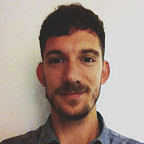‘There Was No Other Option’
The Progressive, Dec 2021
Standing near his front yard, Charles Warsinske gazes at the sprawling expanse of rippling open waters that surrounds his native village of Taholah in northwestern Washington State. The seventy-two-year-old fondly recalls growing up on this remote stretch of Pacific coast, digging for clams and playing football with his friends on a large beach near his parents’ home.
That beach has all but disappeared, submerged under rising waters that have gobbled up chunks of this tiny settlement just west of Seattle, which members of the Native American tribes belonging to the Quinault Indian Nation have called home for generations. Once a half mile away, the sea now laps against the village’s shore. Residents are exposed to repeated flooding, as the stone seawall that protects the land is regularly breached by winter storms.
Since 1950, the sea level off Washington’s coast has risen by up to four inches, according to the National Oceanic and Atmospheric Administration. As the climate warms, the water level around Taholah, on the Quinault Indian Reservation, is predicted to rise up to 2.6 feet by 2100, spelling potential disaster for the low-lying coastal community. The village lies in the Cascadia Subduction Zone, a fault line which puts it at additional risk of inundation from a major earthquake and tsunami.
The resulting vulnerability has pushed the nation to pursue a dramatic solution. In 2017, the Quinault signed off on an ambitious plan to relocate nearly 700 tribal members and key at-risk buildings — including the reservation’s school, senior center, food market, and gas station — to higher ground.
[Continue reading on The Progressive]
